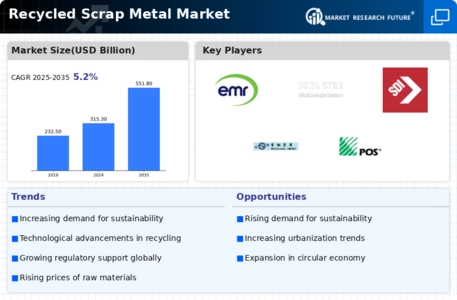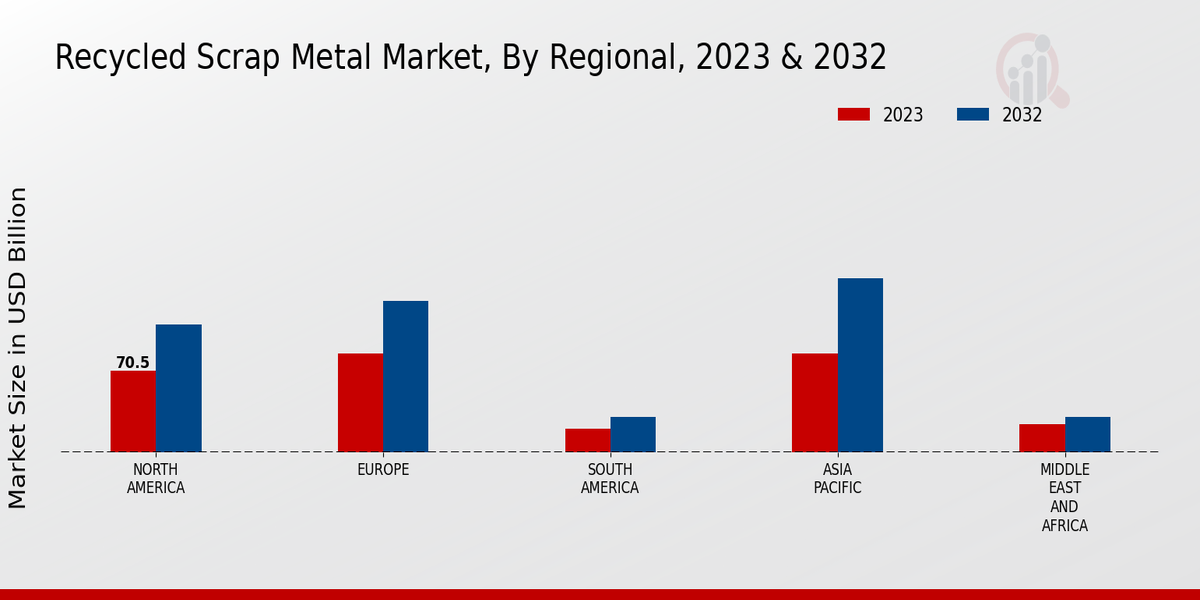Market Trends and Projections
Government Regulations and Incentives
Government regulations and incentives play a pivotal role in shaping the Global Recycled Scrap Metal Market Industry. Many countries are implementing stricter regulations on waste management and promoting recycling initiatives to reduce landfill usage. For instance, some governments offer tax incentives for companies that utilize recycled materials in their production processes. These policies not only encourage recycling but also foster a circular economy, where materials are reused and repurposed. As these regulations become more prevalent, the market is expected to benefit from increased participation from various sectors, thereby enhancing the overall growth trajectory of the industry.
Increasing Demand for Sustainable Materials
The Global Recycled Scrap Metal Market Industry experiences heightened demand for sustainable materials as industries and consumers alike prioritize environmental responsibility. This trend is driven by regulatory frameworks and consumer preferences that favor recycled over virgin materials. For instance, many automotive manufacturers are now incorporating recycled metals into their production processes, which not only reduces waste but also lowers energy consumption. As a result, the market is projected to reach 315.3 USD Billion in 2024, reflecting a growing recognition of the importance of sustainability in manufacturing and construction sectors.
Global Economic Recovery and Industrial Growth
The Global Recycled Scrap Metal Market Industry is poised to benefit from global economic recovery and industrial growth. As economies rebound, manufacturing and construction sectors are likely to expand, leading to increased demand for raw materials, including recycled metals. This growth is particularly evident in emerging markets, where industrialization is accelerating. For example, countries in Asia are ramping up production capabilities, thereby increasing their reliance on recycled scrap metals to meet demand. This trend suggests a positive outlook for the market, as the interplay between economic growth and recycling initiatives continues to evolve.
Technological Advancements in Recycling Processes
Technological advancements in recycling processes are transforming the Global Recycled Scrap Metal Market Industry by enhancing efficiency and recovery rates. Innovations such as automated sorting systems and advanced shredding techniques allow for more effective separation and processing of scrap metals. These improvements not only increase the volume of recyclable materials but also reduce operational costs for recycling facilities. As technology continues to evolve, it is likely that more industries will adopt these practices, further integrating recycled metals into their supply chains. This trend may contribute to a compound annual growth rate of 5.22% from 2025 to 2035, indicating a robust future for the market.
Rising Urbanization and Infrastructure Development
Urbanization continues to surge globally, leading to increased infrastructure development and construction activities. This phenomenon significantly contributes to the Global Recycled Scrap Metal Market Industry, as construction projects often generate substantial amounts of scrap metal. Governments are investing in infrastructure to support growing populations, which in turn creates a demand for recycled metals. For example, the expansion of public transportation systems in major cities necessitates the use of recycled steel and aluminum, thereby driving market growth. The anticipated market value of 551.8 USD Billion by 2035 underscores the critical role of urbanization in shaping the future of the industry.
















